Intel: For Mainstream Gamers, Our IGPs Are Equivalent to Discrete GPUs
by Anton Shilov on January 14, 2016 12:03 PM EST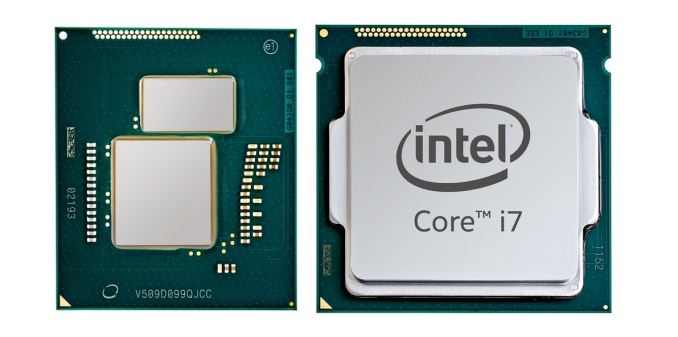
Intel’s integrated graphics processors (iGPUs) are the most widespread PC-class graphics adapters on the planet. Enthusiasts of high-performance personal computers do not use Intel’s iGPUs, but the world’s largest developer of microprocessors says that for mainstream and casual gamers its graphics solutions offer performance, which is comparable to that of inexpensive discrete video cards.
“For the mainstream and casual gamer, we have improved our Iris and Iris Pro graphics tremendously,” said Gregory Bryant, vice president and general manager of the desktop client platforms at Intel, at the J.P. Morgan Tech Forum at the 2016 International CES. “We have improved our graphics performance [by 30 times] from where it was five years ago. We believe that the performance of Intel’s integrated graphics today, what we offer in the products […], is equivalent to the performance of about 80% of discrete [GPU] installed base.”
Intel has been improving its integrated graphics cores at a rapid pace after the company cancelled its discrete graphics processing unit code-named Larrabee in 2010. Thanks to timely transition to newer process technologies, Intel could increase transistor budgets of its central processing units significantly every couple of years. As the company did not increase the number of general-purpose cores inside its mainstream CPUs for desktop and mobile personal computers in the recent years, the lion’s share of that additional transistor budget was spent on iGPU-related improvements.
Intel considers its code-named Clarkdale and Arrandale processors its first-generation CPUs with integrated graphics (which is not entirely correct since these CPUs had two dies: the processor die as well as graphics and integrated memory controller die). Back then, Intel’s most advanced iGPU featured 12 execution units (EU) with peak compute performance of around 43 GFLOPS. Since then, the architecture of Intel’s integrated graphics processors has evolved to accommodate new features and gain performance. Today, each EU features two ALUs that can execute up to four 32-bit floating point or integer operations per cycle (in fact, one of the two ALUs in Intel’s Gen8 EU also supports double precision 64-bit floating point operations). Intel’s latest microprocessors — Broadwell with GT3e and Skylake with GT4e graphics cores — have Iris Pro iGPUs with 48 and 72 EUs as well as peak compute performance of 883 and 1152 GFLOPS, respectively.
While Intel did not define what it considered to be the installed base of discrete graphics cards, it is obvious that the company compares its recent Iris and Iris Pro integrated graphics processors to discrete graphics adapters sold in the last five or even more years and which are currently in use.
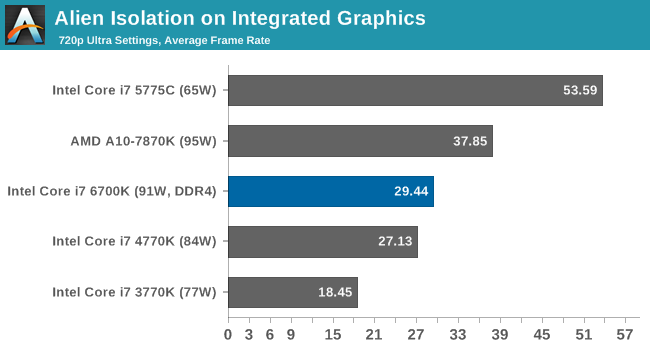
Intel’s latest integrated graphics processor found in its Skylake chips — the Iris Pro 580 with 72 execution units and 1152 GFLOPS compute performance — should outperform even more advanced discrete graphics processors. In fact, AMD's latest integrated graphics core also outperforms the low-end graphics card (albeit, by a small margin).
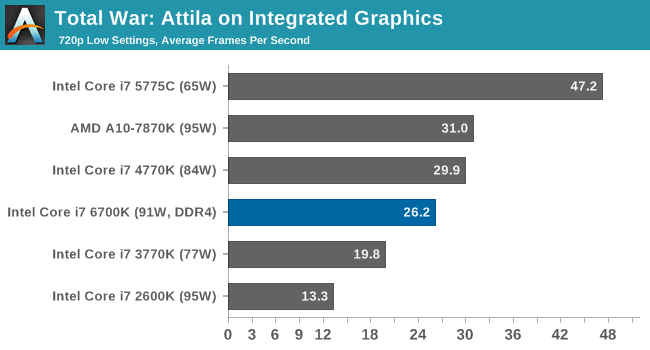

Because many people do not play demanding games that use the latest application programming interfaces (APIs), performance and features of Intel’s modern iGPUs may be enough for their needs. Moreover, since casual and even some mainstream gamers usually buy low-end graphics adapters, Intel’s Iris Pro 6200 and Iris Pro 580 can actually outperform such GPUs (or offer similar performance). It is not clear whether 80% of discrete graphics boards currently in use belong to the entry-level segment, but it evident that contemporary iGPUs are somewhat better than cheap video cards.
Even though enthusiast gamers do not use Intel’s high-end iGPUs, the company continues to thrive because of PC gaming. According to Intel’s management, sales of its Core i7-series microprocessors set records in Q2 2015 despite weak demand for personal computers overall. Moreover, Intel claims that shipments of high-end enthusiast-class hardware in general are at all-time high and growing. Intel sells not only powerful Core i7 CPUs with unlocked multiplier to demanding gamers, but also chipsets, solid-state drives, various controllers and other components for high-end PCs. As a result, the company takes advantage of increasing demand for powerful personal computers.
Source: Intel Investor Relations


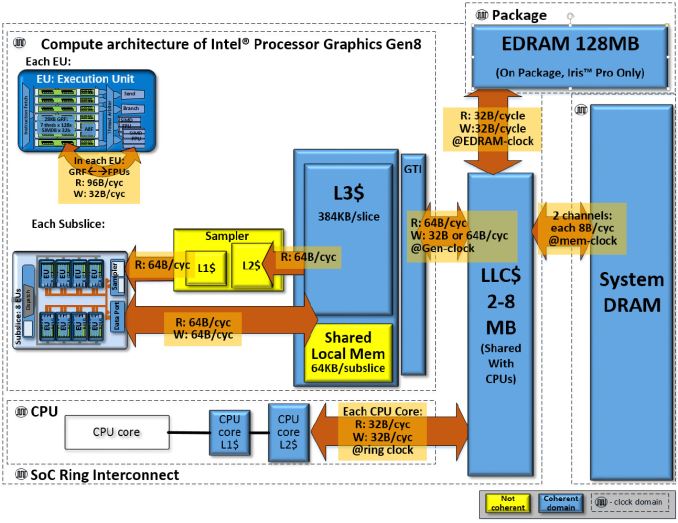
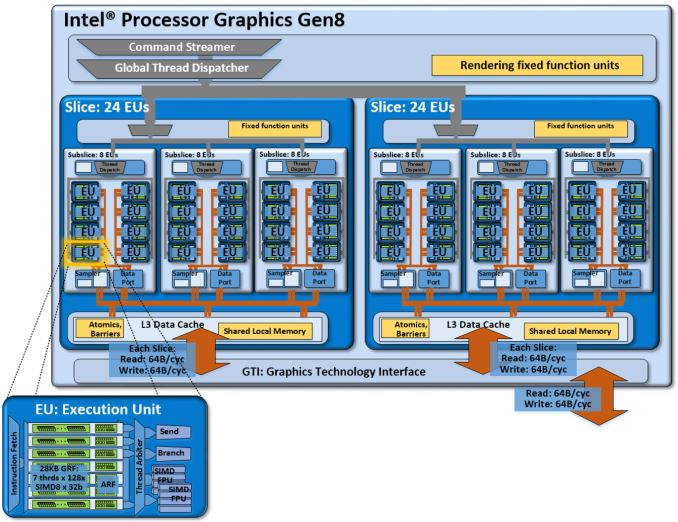








96 Comments
View All Comments
Namisecond - Tuesday, January 19, 2016 - link
That's a good point you brought up: Scarcity of Iris Pro across Intel's product line. At this moment, I can't even buy a Skylake processor with their latest Iris Pro GPU. In the previous Broadwell generation, you could only find Iris Pro in the top-of-the-line Core i5 and i7 processors (socketed or soldered). Even then I had a heckuva time acquiring one (I test a lot of hardware).It's pretty much marketing fluff, Intel puffing out its chest saying they are relevent to gamers. There is a small possibility that Intel may be starting a marketing push to try and sell more Iris Pro equipped CPUs, but unless they start including them in their lower cost Core i3 and other less expensive processors, lotsa luck to them. Until then, the gaming segment belongs to the discrete GPU.
D. Lister - Thursday, January 14, 2016 - link
I love the details in this advertisement. When you're paying AT for promotion, dammit you're getting a bang for your buck. *thumbsup*BrokenCrayons - Thursday, January 14, 2016 - link
Intel's top end graphics really are more than enough for most gaming needs. In fact, even their lowest end modern GPUs in Cherry and Bay Trail chips are perfectly fine for older games and less demanding current games. I'd like to see improvements and most certainly migration of the full 128MB EDRAM package down the product stack, but I think it's more important to continue to focus efforts on reducing power consumption and heat output so moving parts in computers are unnecessary. We're already moving away from hard drives and kicking giant desktop PCs into the recycle bin in favor of mobile devices and much smaller desktop form factors. It's also time to do away with cooling fans. I've been relatively happy with Intel graphics since the GMA 950 came out and marginalized the importance of discrete graphics in my own computing. Sure, I've purchased or built the occasional desktop and fed it a GPU for fun, but it was never necessary and didn't really add a lot of value to my computing experience. So yes, I can see Intel's logic in this and their claims are pretty meaningful, but my preference is they spend more of their effort on making elegant, passively cooled processors and leave the double or triple digit TDP exclusively in server racks.fanofanand - Thursday, January 14, 2016 - link
Your comment doesn't make sense in an "article" about gamers. Your comment leaves the impression that you don't game at all, so your comment really isn't relevant to the discussion.BrokenCrayons - Friday, January 15, 2016 - link
It seems like you're trying to kick someone out of an "exculsive" tree house of boy gamers by reading between the lines to find a reality that you want that makes my comment fall outside of a preconceived notion of what does or doesn't constitute someone who plays video games. I admit I'm sort of perplexed by why that's significant enough to even comment about, but there is an interesting subculture in people who play computer games heavily that I don't fully understand.Namisecond - Tuesday, January 19, 2016 - link
I have experienced that a good portion of the enthusiast gaming community has a problem with thoughts and commentary that doesn't toe some imaginary line. It's basically tribalism or the "exclusive tree house" mentality as you've state and it really does make it difficult to have discussion that doesn't cater to that mentality.Nexing - Sunday, January 17, 2016 - link
Context could be relevant, at lest to contrast what gamers, older gamers and regular users constitute. I happily ran a laptop with Sandy-Bridge's HD-3000 powering a 2015's 2560x1980 IPS widescreen plus the integrated 1766x768, simultaneously. I play no games, mostly audio, office programs and the occasional HD video/film, hence not stressful demand from the GPU, nevertheless with no a single perceived problem whatsoever from a 5 years old Intel integrated GPU. Have to say that Intel drivers have been actualized on a frequent basis, allegedly improving performance/quality.Nexing - Sunday, January 17, 2016 - link
Should say; HD-3000 powering a 2015's 2560x1080 IPS widescreenguidryp - Thursday, January 14, 2016 - link
How about a dollar to dollar comparison.Cheap CPU + $99 GPU card VS Fancy Iris Pro.
10101010 - Monday, January 18, 2016 - link
This. Intel with their effective monopoly has jacked up prices on all their better chips to the point of absurdity. Even though Moore's Law has run far enough for Intel to stop making dual core chips, we end up with tons of machines with only two cores. The modern web browser runs a lot better with more cores -- and better graphics.The market needs AMD to make a strong comeback. Evolution in x86 has slowed to a crawl and prices are through the roof for chips that should be very cheap.